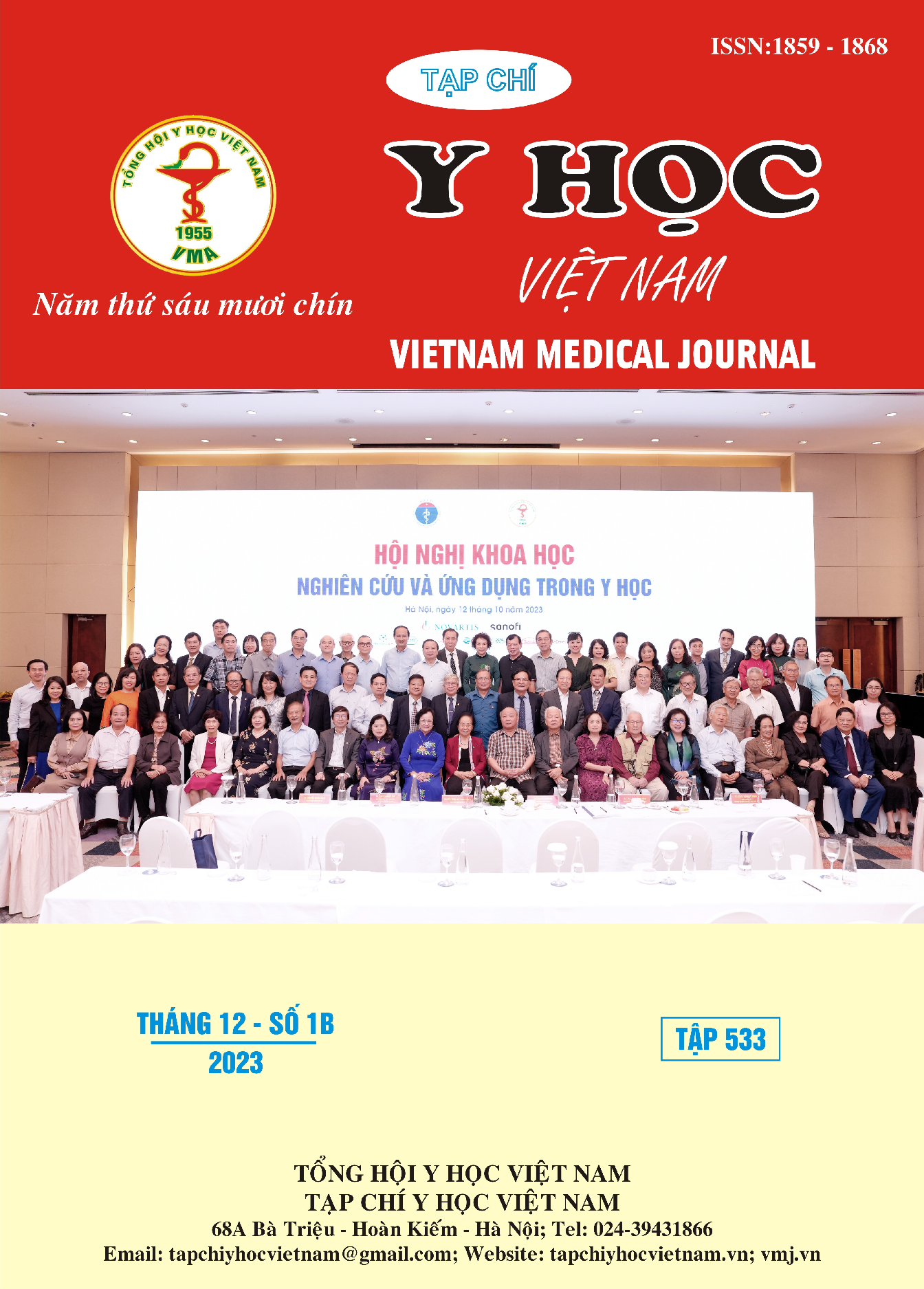SHORT – TERM OUTCOMES OF CYANOCRYLATE CLOSURE IN TREATMENT OF CHRONIC VENOUS INSUFFICIENCY
Main Article Content
Abstract
Objectives: To evaluate short – term outcomes, safety and features affect the outcomes of Cyanoacrylate in treatment of chronic venous insufficiency. Study subjects: Symptomatic patients diagnosed with chronic venous insufficiency and were treated with endovenous ablation therapy by Cyanoacrylate glue at Friendship Hospital between May 2022 and July 2023. Methods: Prospective descriptive, non – randomized single center study. Results and conclusions: 17 patients, 26 GSV who underwent CAC, mean age was 63.18 ± 17.07 years, 70.6% female, C2 to C4a CEAP classification. There was 100% anatomic success. Patients tolerated the procedure well and reported low procedural pain (mean VAS pain score, 1.5 ± 0.7. At 1 day, 1 month and 3 months after CAC, GSV occlusion rates were 26 of 26 (100%). At the day 6.6, almost patients can return to normal life (mean day, include patients with either adverse events or no adverse events occurred). At 1 month and 3 months, Clinical CEAP classification improved from 2.58 ± 0.58 at baseline to 1.46 ± 0.71 (p<0.001). At 1 month and 3 months, clinical symptoms and quality of life that assessed by rVCSS, EQ – 5D, CIVIQ -14 and AVVQ score significantly improved (p<0001). No serious adverse events occurred. 1 of 26 GSV ( 3.8%) had thrombus extension after Cyanoacrylate closure (TEACAC), which was grade I of EHIT of Kabnick completely resolved after 3 weeks follow up without using anticoagulant drugs. 3 of 26 GSVs had phlebitis abnormal reaction like (PLAR): Pain/Tenderness, erythema along the treated veins that were tolerated well with using steroids, NSAIDs and antihistamines and no complications. Mean treated GSV diameter, procedural mean time and puncture site may affect the results.
Article Details
References
2. Temur B, Aydin S. Outcomes of Endovenous Cyanoacrylate Closure Using Venaseal TM System for Chronic Venous Insufficiency. Acibadem Univ Saglik Bilim Derg. 2021;12(4). doi:10.31067/ acusaglik.950231
3. Falvo N, Latreche A, Chevallier O, et al. Cyanoacrylate Glue for Treating Chronic Saphenous Vein Insufficiency: A Retrospective Observational Single-Center Study. Diagnostics. 2023;13(14):2313. doi:10.3390/diagnostics13142313
4. Tang TY, Yap CJQ, Chan SL, et al. Early results of an Asian prospective multicenter VenaSeal real-world postmarket evaluation to investigate the efficacy and safety of cyanoacrylate endovenous ablation for varicose veins. J Vasc Surg Venous Lymphat Disord. 2021;9(2):335-345.e2. doi: 10.1016/ j.jvsv.2020.03.020
5. Güven C, Baykan A. Comparison of stripping/ligation and embolization with cyanoacrylate in venous insufficiency treatment. J Surg Med. Published online May 30, 2020. doi:10. 28982/josam.732821
6. Proebstle TM, Alm J, Dimitri S, et al. The European multicenter cohort study on cyanoacrylate embolization of refluxing great saphenous veins. J Vasc Surg Venous Lymphat Disord. 2015; 3(1):2-7. doi:10.1016/ j.jvsv.2014. 09.001
7. Morrison N, Gibson K, Vasquez M, et al. VeClose trial 12-month outcomes of cyanoacrylate closure versus radiofrequency ablation for incompetent great saphenous veins. J Vasc Surg Venous Lymphat Disord. 2017;5(3):321-330. doi:10.1016/j.jvsv.2016.12.005
8. Sermsathanasawadi N, Pruekprasert K, Prapassaro T, et al. Thrombus extension after cyanoacrylate closure of incompetent saphenous veins. Int Angiol. 2022;41(2). doi:10.23736/ S0392-9590.22.04768-X


